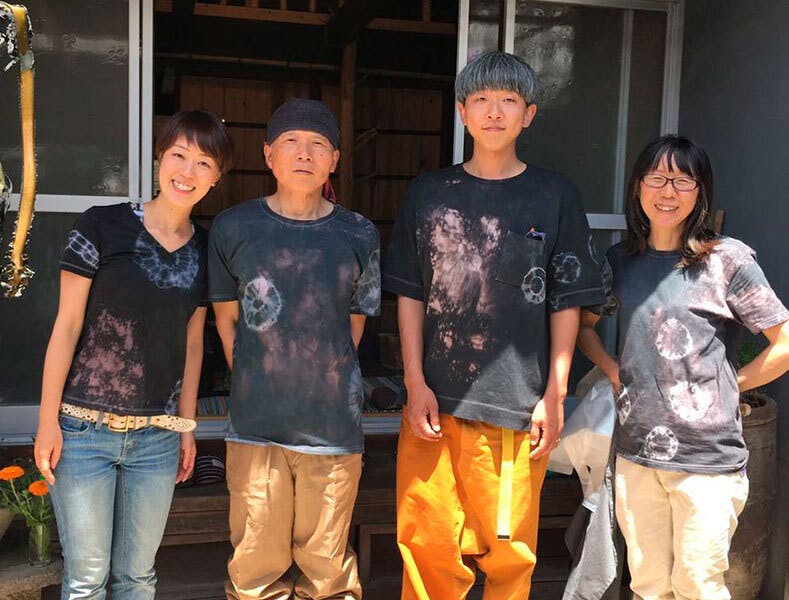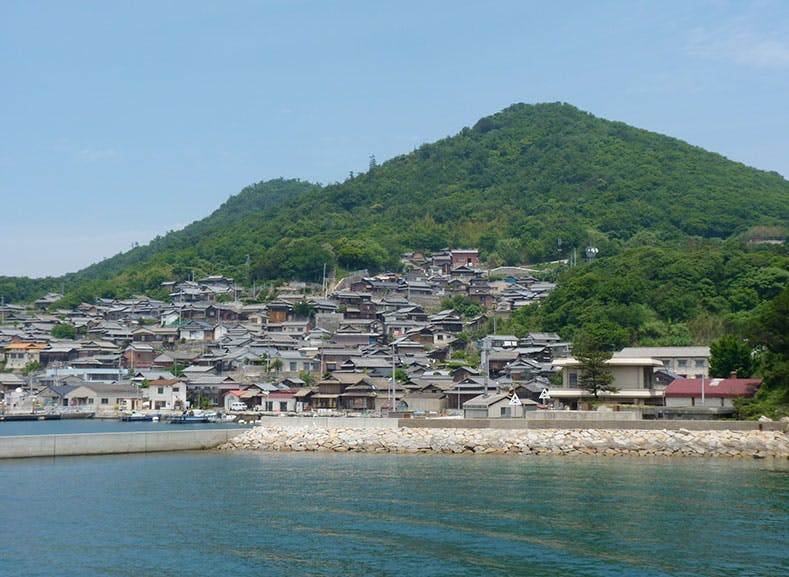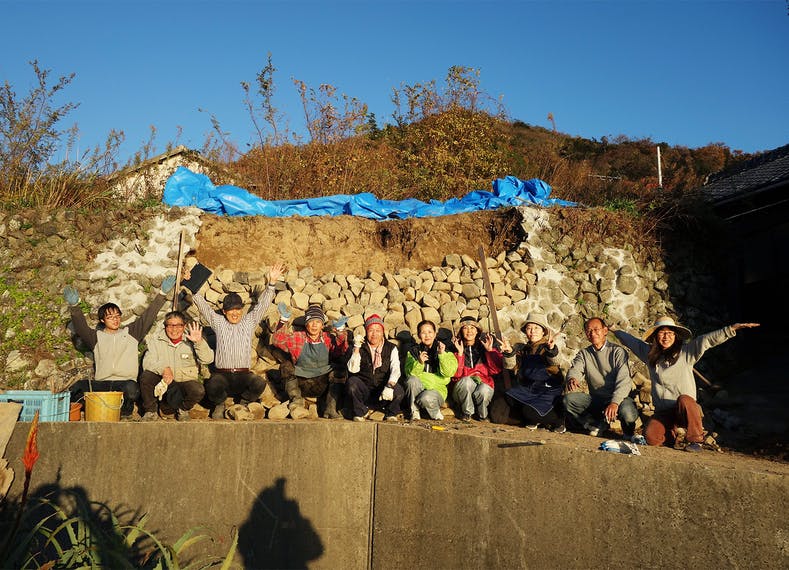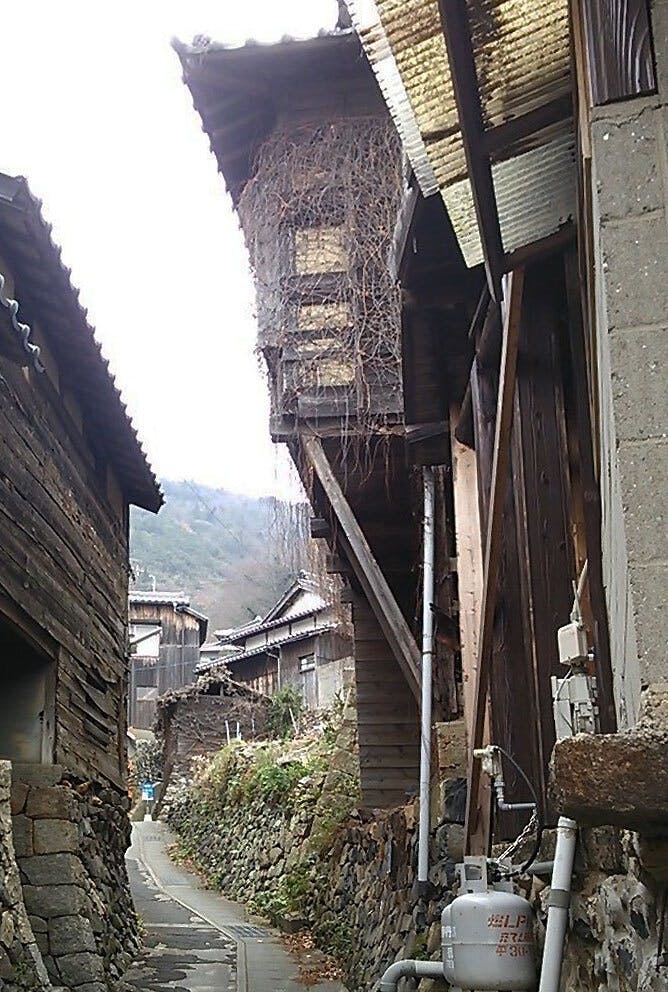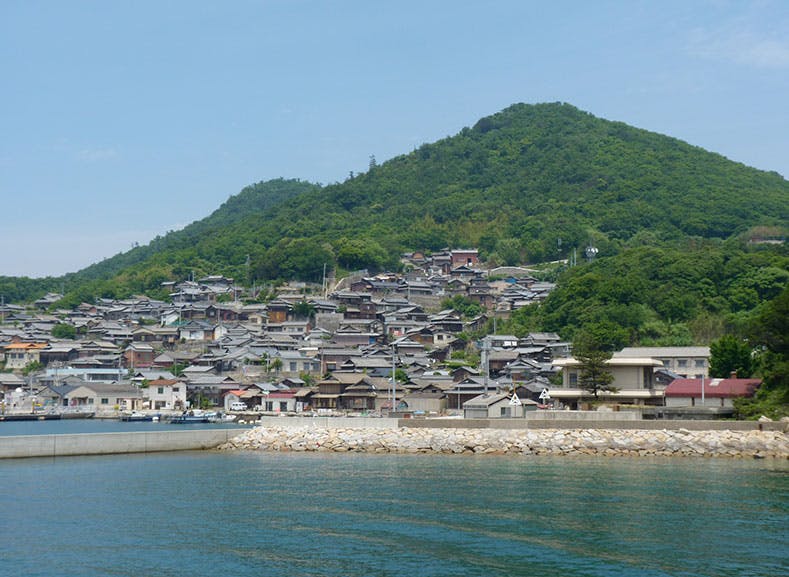
う
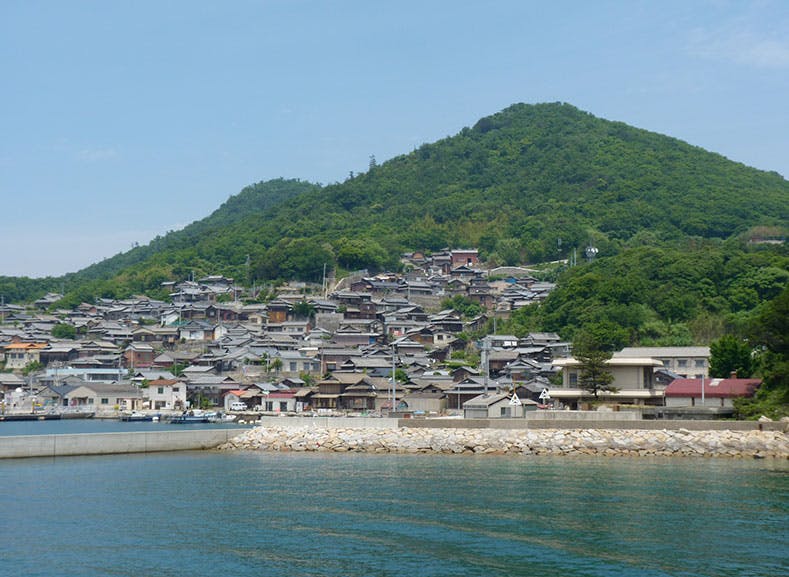
1 What is Ogijima Island?
Ogijima in Kagawa Prefecture is a small island with a 5km circumference. Ferries from Takamatsu Port depart for it regularly. On this island floating atop the Seto Inland Sea, traditional Japanese houses built around 100 years ago line the steep slopes, and narrow, labyrinthine passageways of rock walls made from local basalt create a unique and beautiful scene.
2 This townscape is somehow nostalgic, but these vacant houses are falling apart!
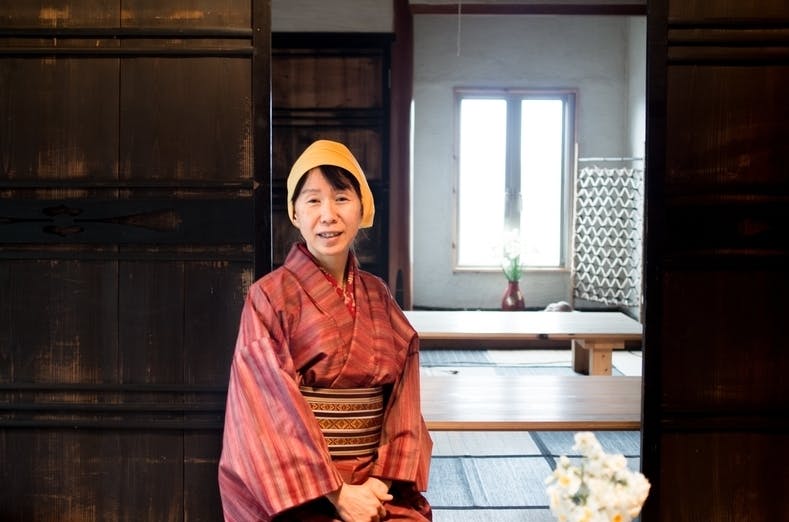
My name is Miyoko Kobayashi, founder of the Ogijima Island DORIMA no Ue Project.
Arriving on Ogijima only 40 minutes away from Takamatsu Port, the boat gently sways back and forth and it's like being suddenly transported to a totally different world of calm, with bountiful nature of mountains and the sea. This area became famous for hosting the "Setouchi Art Triennale" festival, so it is often assumed by many that this area is doing really well. But actually...
Currently, there are 104 inhabited households on the island, and 68 empty houses. Every year, 2 or 3 houses fall apart through natural decay and some more houses are demolished, sometimes over 5 houses disappearing within a single year. If nothing is done, it is possible that the townscape of Ogijima itself will disappear entirely.
It's been 12 years since I first came to Ogijima, cutting down trees on an abandoned farm (it had been unused for around 40 years). I contacted people off the island, and started helping people with farming, some of whom have even moved to Ogijima. However, as is common in areas that are underpopulated and aging, abandoned fields are increasing every year, and the population as well as houses keep decreasing.
The population of Ogijima is presently 160, of which 70% is over 60 years old. Will the number of boats (currently 6) to Ogijima per day be able to be maintained after 10 years? Even the post office and the agricultural coop might be gone! Can the people left really handle managing the waterways, mowing the pathways, and upkeeping the rock walls and empty houses? I've tried consulting with the Policy Planning Division of the City, the Cultural Properties Division, the Division of Safe and Secure Living, and the City Planning Division, but could find no trace of any headway being made...
Is it really OK to just watch as these buildings and walls continue to crumble apart? If everything falls apart, there is no way to restore this landscape again! I was filled with worry about what to do.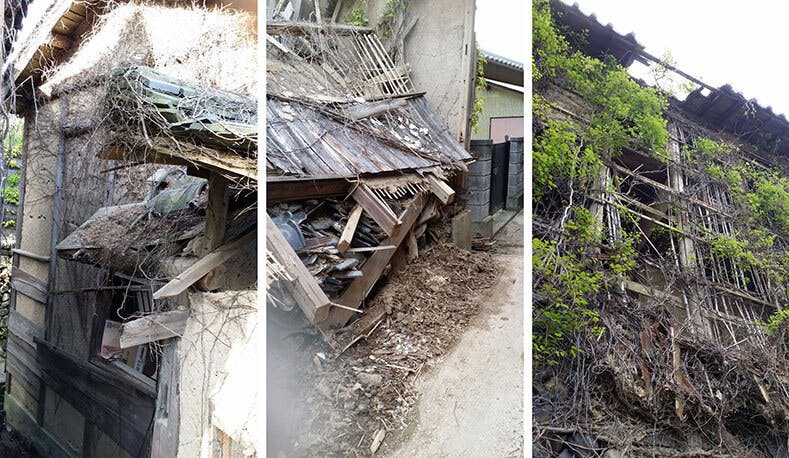
3 The Rock Wall Workshop: Steps Taken
3 years ago, I was lucky enough to purchase a farmhouse on the island. I changed the pillars and restored the walls, and continue to do woodwork myself, so that this 100-year old farmhouse will last another 100 years.
With the goal of saving the townscape, I founded a nonprofit organization, and it was on to the next step... These are truly rare rock walls, with granite blended with basalt rocks taken from the columnar jointing formations on the cliffs near the top of the mountain. The walls began to fall apart here and there due to a long rainy period in the fall of last year. We searched for someone to restore them on the island, but the traditions of masonry had been lost.
In November and December, an instructor from outside the organization visited the island, held a course, and conducted restorations. It took 2 days to restore "the landscape of rock walls", with everyone, including all the villagers of the island, combining their efforts and enjoying getting the knack for masonry as well as focusing on the project. The owner of the wall exclaimed "Today, our ancestors are smiling down on us!" Some days later, a man on the island said "I fixed my field's stone wall right away too!"
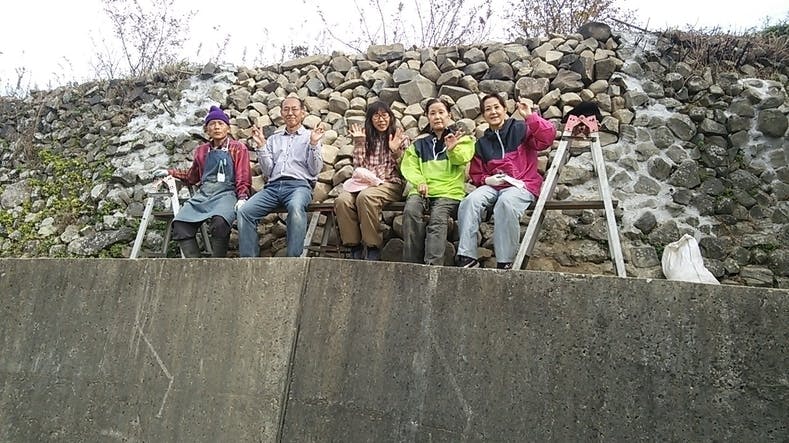
We were happy that for the first time in 20 years, masonry techniques were transmitted on the island. From however small a step, Ogijima will have a "safe townscape" and a "refreshing spirit of combined effort". Therefore, we made a new resolution to continue taking steps, if only one step at a time.
4 Next, I want to fix this house!
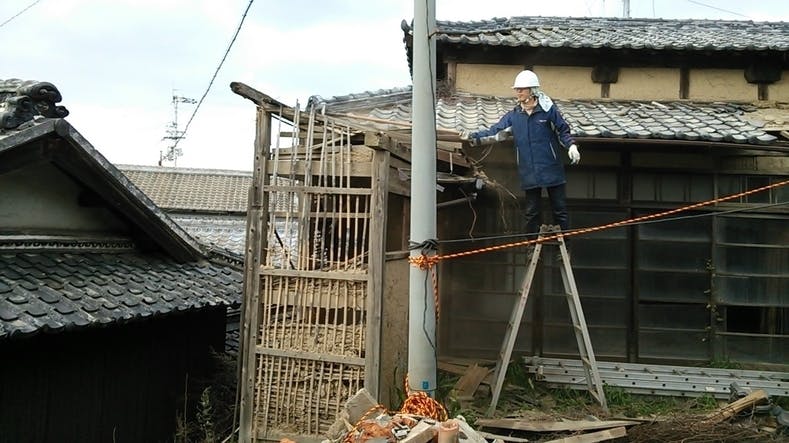
The next thing we will fix is the most dangerous vacant house on the island. The house is jutting into the middle of the pathway from being uninhabited for a long time. For the safety of everyone, including the visitors to Ogijima, something must be done about this house... There are no streets on which cars can travel, and there are no hardware stores at which to obtain materials on the island. However, we took the following first step to preserve the old-time feeling of the townscape. Without completely demolishing the building, carpenters are working to carefully preserve the parts of it that can still be used, in order not to disturb the landscape of the island.
5 Steps and Goals for Use of Vacant Houses
First, we must cut away the part of the corridor of the second floor which has fallen dangerously into the middle of the pathway. Next, we make a foundation to jack up the tilting house. Then we replace columns and beams that have rotted.
Beams able to be used will be reused (of Japanese red pine that was once logged and carried down from the mountains of Ogijima by everyone). New timber will be sourced locally (from Kagawa Prefecture trees). At other sites as well, we want to use natural materials whenever possible. Our goal is to create sustainable houses without the use of chemicals, just as they were 100 years ago.
It can be expected that many will visit the island next fiscal year for the 2019 Setouchi Art Triennale. We want to ask for everyone's help to ensure the safety of the roadway, the preservation of the atmosphere of long ago, and the continued use of the original materials of the buildings while they still remain. We plan to use restored buildings for multipurpose centers and lodging facilities.
How Donations are Used
A portion of donations will go toward the expenses to restore dilapidated houses. (postage fees and handling fees included)
6 Now what?
We fix houses in ruin that nobody else will touch from the funding our nonprofit organization receives. Funding goes to remuneration of labor and the cost of materials. Remodeled houses will be sold, rented, or turned into guest houses and stores, and the profits will go toward development and renovation of the next dangerous empty house.
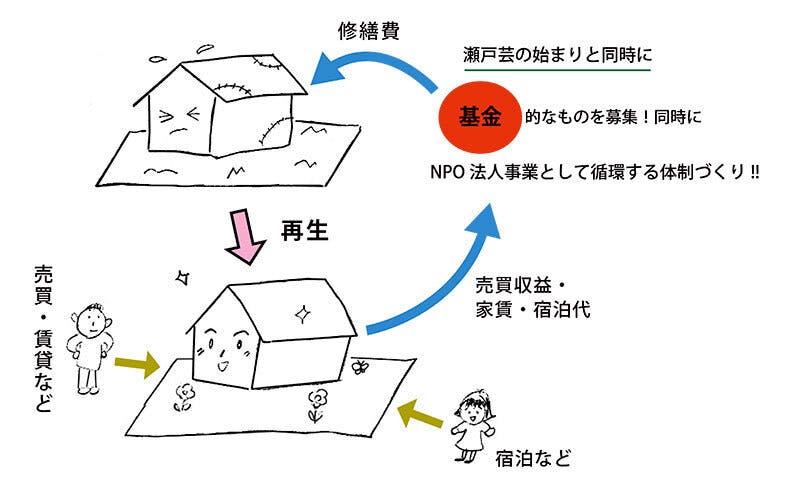
Currently, there are not many visitors to the island aside from years when the Setouchi Art Triennale is held. By breathing new life into the settlement, we strive to catch the attention of sightseers with the scenes of rock walls and the sea as viewed from the hills, as well as the tasteful pathways. We also aim to reinvigorate the townscape by creating a safe space for islanders and a lively place for visitors.
7 About me: a no-chemical lifestyle of natural home farming / farmhouses / rock walls / waterways / regional cuisine / herbal medicines
I moved from Tokyo to Takamatsu 30 years ago, when returning to a farming life was still a rarity. I started cultivating vegetables because I wanted fresh and safe produce for my family to eat, and I have been growing vegetables pesticide-free and fertilizer-free on Ogijima for 12 years. Now, we offer an "Ogijima Life & Culture Experience" course in the cafe / "workshop guesthouse" housed in a farmhouse built 100 years ago, and serve "nourishing meals" with well-balanced nutrients using our homegrown fruits and vegetables, as well as Ogijima "vegetable juice sherbet", and other desserts unable to be found anywhere else. We're working to share the abundance of Ogijima Island with everyone!
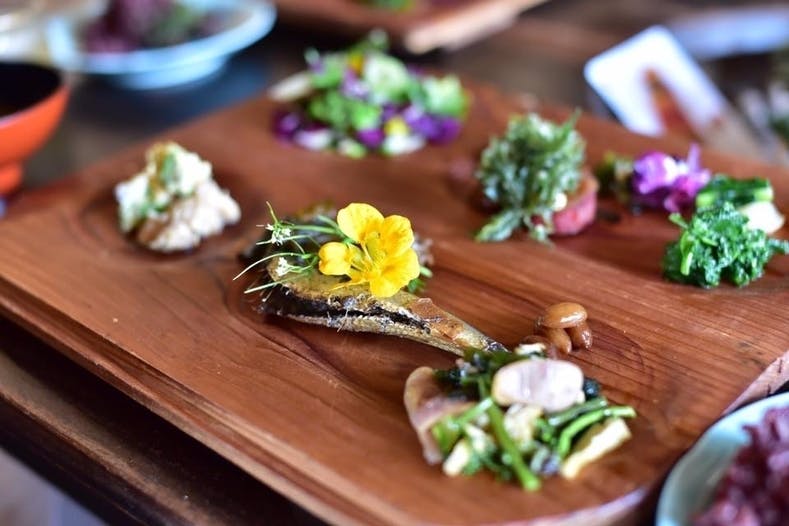
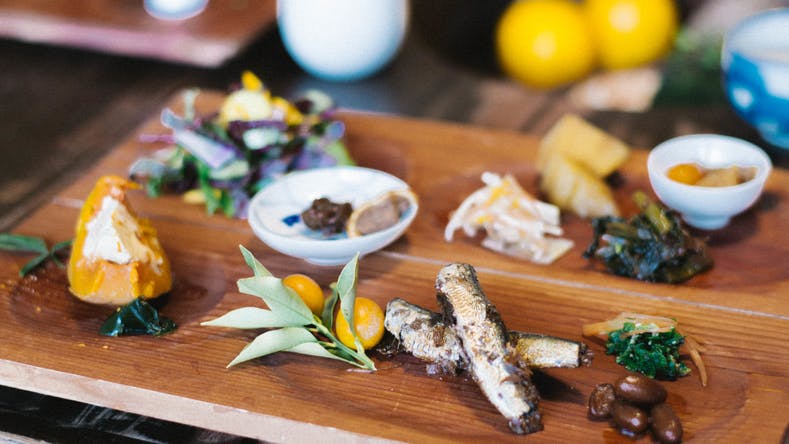
8 For visitors coming not just from Tokyo or Osaka, but from France, England, the United States, Australia, and other countries:
Though this is a quaint little place made from local trees and earth, it is thanks to you that our young visitors feel as if they're relaxing at their grandmother's house. At the lodge, we make tempura out of medicinal herbs, chop wood for the fire, and more. We use the kindling to stoke the fire under the bathtub, and many Japanese middle-schoolers exclaim "it's like a scene from Totoro!" when they see the smoke drifting from the chimney. After entering the wood-heated bathwater infused with herbs and orangepeel, you'll feel toasty enough to wear short sleeves even in the dead of winter! The abundance of wisdom in the lifestyle of long ago is truly extraordinary.
In this day and age where it's difficult to experience the culture of even your own country, I'm grateful to think that people request to enter our "Totoro world" and come all the way to Ogijima Island. It can be said that the townscape has been preserved BECAUSE the roads are too narrow for cars, and the island is "inconvenient". But if the number of abandoned houses continues to increase, the livelihood of those who took the trouble to move to the island will be jeopardized, and spaces for visitors wishing to escape the daily grind will also disappear.
9 In Closing
"The empty houses are property of all of Ogijima, and if they disappear, we will never be able to be restored."
We are reaching out to everyone on various occassions to gain support for not leaving the houses empty as they are. They can be restored by us for you, or they can be rented or sold by you and restored by others. "I'm so glad these old farmhouses and rock walls are still standing!" Just as I have felt, 100 years from now I want people to be able to say "I'm so glad this townscape is still here!" 
I've made my life here, and I really think Ogijima is like a "cultural heritage of the people" which can heal your heart. I ask for the support and encouragement of everyone to ensure the safety of islanders and visitors alike, to protect this "real life scene from Totoro", and to preserve Ogijima's "lifestyle-culture and townscape". Please spread our information via SNS, etc., so others learn about the status of Ogijima. (We are also hiring.)
